1930s
Ice-Block Skiing
It's like water-skiing, but on blocks of ice towed through city streets.Wipeouts would be a lot more painful.
Info from the LA Public Library:
I'm guessing the year was 1936, since the other images of the 'Miss California Bathing Beauty Contest' at the library are from that year.
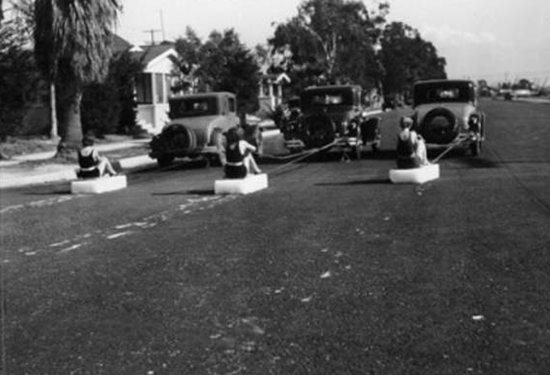
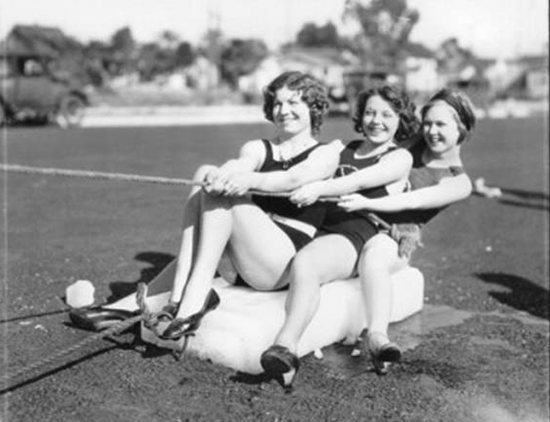
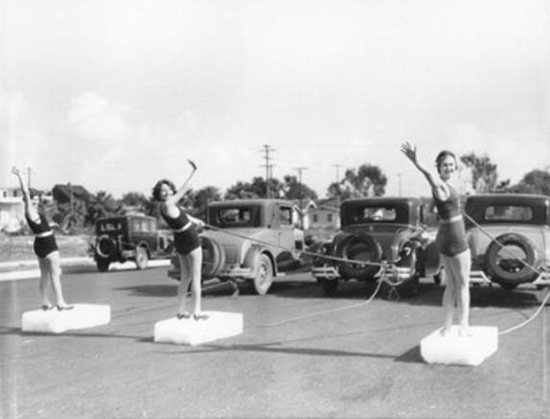
Posted By: Alex - Thu Feb 10, 2022 -
Comments (3)
Category: Sports, 1930s
Ellen Harkonen, Potato Queen of 1936
Source: Keansburg News (Keansburg, New Jersey) 31 Dec 1936, Thu Page 4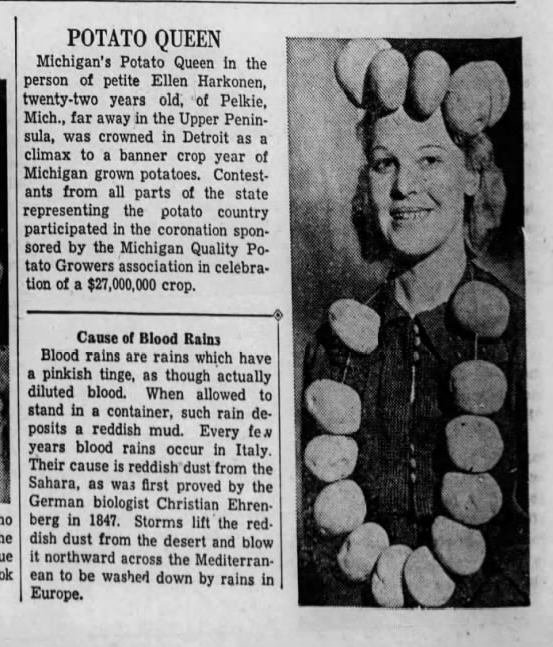
Posted By: Paul - Thu Feb 10, 2022 -
Comments (2)
Category: Agriculture, Awards, Prizes, Competitions and Contests, Beauty, Ugliness and Other Aesthetic Issues, Food, 1930s
NRA Day Parades
The current era has been compared to the Depression and New Deal under Roosevelt. But what's lacking today as we seek to emerge from the pandemic malaise is--parades!To celebrate "NRA Day," New York City threw a parade that utilized a quarter of a million participants.
But it wasn't just NYC. Smaller places joined in too. Such as Dothan, Alabama. Visit this page for the full account, with lots of great photos.
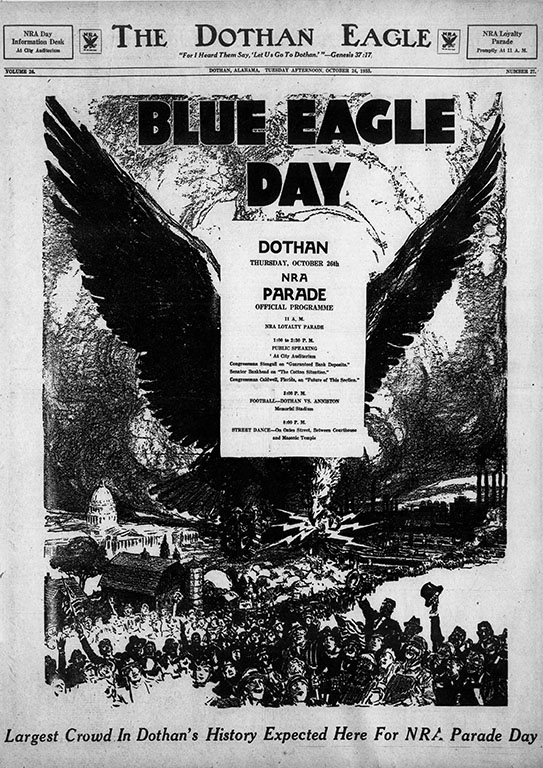
Posted By: Paul - Tue Feb 08, 2022 -
Comments (2)
Category: Government, Money, Parades and Festivals, 1930s
45 Jobs in 45 States
In January 1939, Lyra Ferguson of Missouri left her job as a church secretary and took off on a tour of the United States. Her goal was to spend a week working in all 48 states. Alaska and Hawaii weren't yet states, so she didn't have to worry about those. She was equipped with only "a new automobile, a small wardrobe, a little pistol and $200." I'm not sure of her exact age, but news reports said she was "over 40."She made advance plans to secure a job in a handful of states, but mostly she just arrived and tried to find employment. She also tried to find jobs in industries that seemed representative of each state.
Ultimately she managed to find one-week jobs in 45 states but failed to get work in New York, Nevada, or Arizona.
Her plan had been to write a book about her adventures, but in a later interview she said her attempt at a book was "terrible." So that plan fell through.
However, she did take film footage of her entire journey and later edited this together into a movie which she showed to various groups. Unfortunately I can't find any evidence that this movie still exists.
Below is a list of her jobs in 42 states. I couldn't find any info about her jobs in Arkansas, Colorado, or West Virginia.
- Alabama: performed at the assembly exercises of the Tuskegee Institute
- California: worked for an overall company at the San Francisco fair
- Connecticut: typewriter factory
- Delaware: tanned kid skins in a tannery
- Florida: packed oranges
- Georgia: cafeteria
- Idaho: dug potatoes
- Illinois: made wax fruits and flowers
- Indiana: manufactured refrigerators
- Iowa: pen factory
- Kansas: packed dog food
- Kentucky: ironed shirts in a laundromat
- Louisiana: packed shrimp
- Maine: helped out in a lighthouse
- Maryland: tea packing factory
- Massachusetts: served as attendant in an insane asylum
- Michigan: maid on a Great Lakes steamer during tulip festival
- Minnesota: sewed buttons on suits
- Mississippi: shucked oysters
- Missouri: social hostess at a hotel
- Montana: cooked on a dude ranch
- Nebraska: booked well-known artists for an agency
- New Hampshire: paper factory
- New Jersey: cosmetics factory
- New Mexico: sewed labels on ties made by Native Americans
- North Carolina: weaved homespun suiting
- North Dakota: picked chickens
- Ohio: worked in the printing room of a newspaper
- Oklahoma: wiped windshields at a gas station
- Oregon: packed salmon
- Pennsylvania: made chocolate candy at Hersheys
- Rhode Island: baking powder factory
- South Carolina: textile industry
- South Dakota: took pictures of the Black Hills for the association of commerce
- Tennessee: washed turnip greens
- Texas: delivered packages during the Christmas holidays
- Utah: wove blankets in a woolen mill
- Vermont: helped make maple syrup
- Virginia: weighed peanuts
- Washington: worked at a general store in a logging camp
- Wisconsin: milked cows for a dairy
- Wyoming: worked at Yellowstone
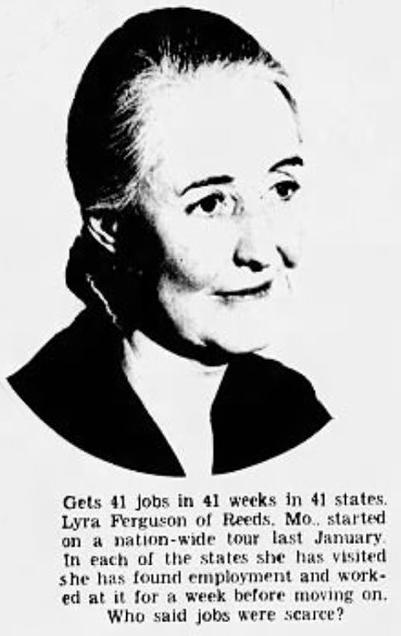
Pittsburgh Press - Dec 24, 1939
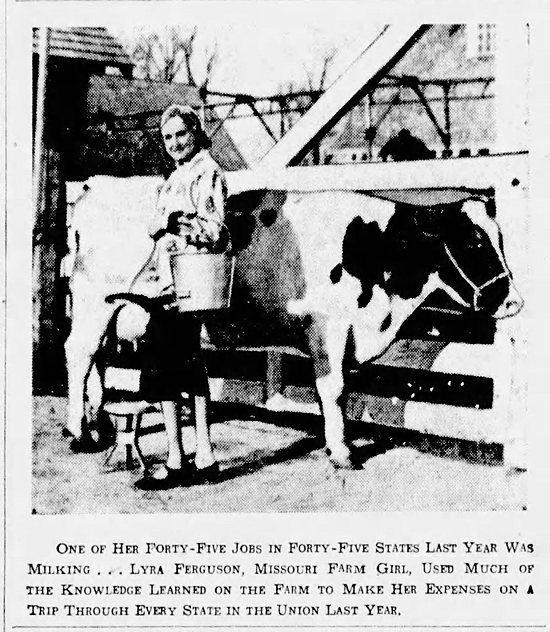
Weekly Kansas City Star - May 8, 1940
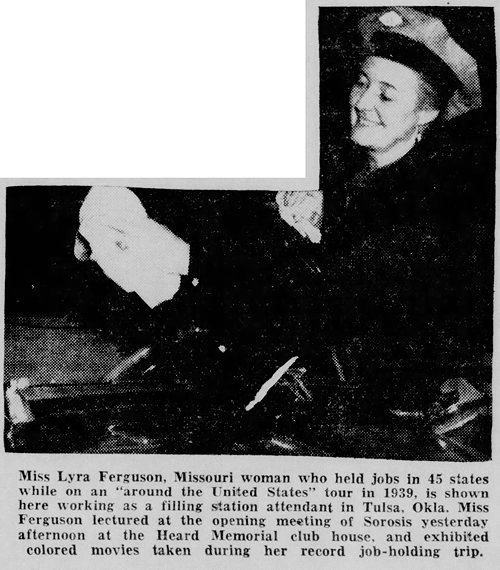
Sedalia Democrat - Sep 23, 1941
The only follow-up info I can find about her was that in 1956 she had just returned home from a world tour during which she collected souvenirs from the countries she visited. She obviously really liked to travel!
Posted By: Alex - Sun Jan 23, 2022 -
Comments (9)
Category: Jobs and Occupations, Travel, Tourists and Tourism, 1930s
To Gladden Hearts and Lighten Labor
Surprise, Honey! Now get to work.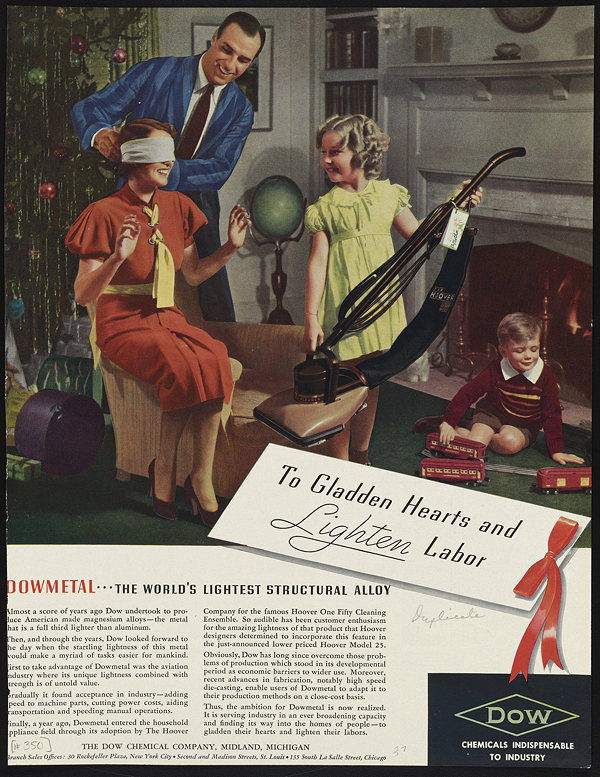
1937 - via Science History Institute
Posted By: Alex - Sat Dec 25, 2021 -
Comments (4)
Category: Advertising, Gender, 1930s, Christmas
The Mailomat
Very handy for Xmas rush!Article source: Oakland Tribune (Oakland, California)10 Dec 1939, Sun Page 59
Another good article here, with more pics.
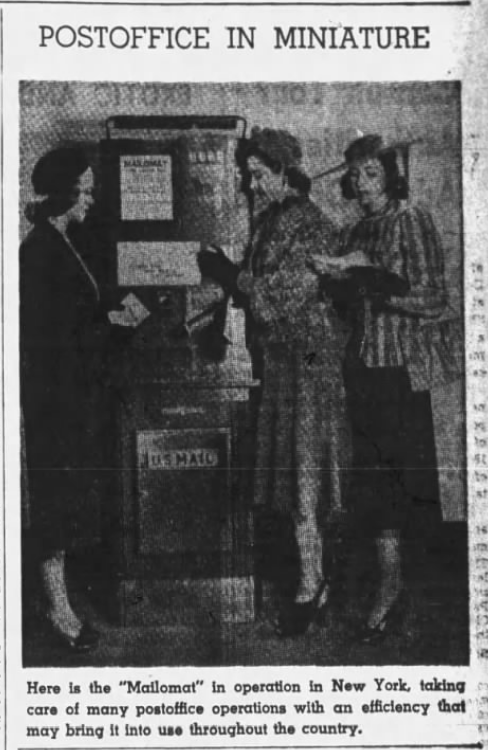
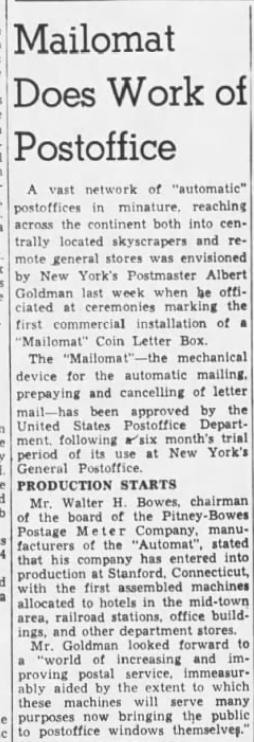
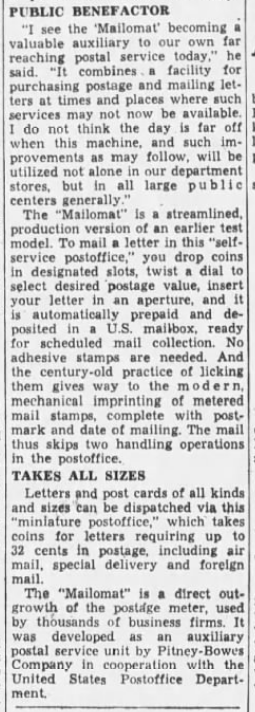
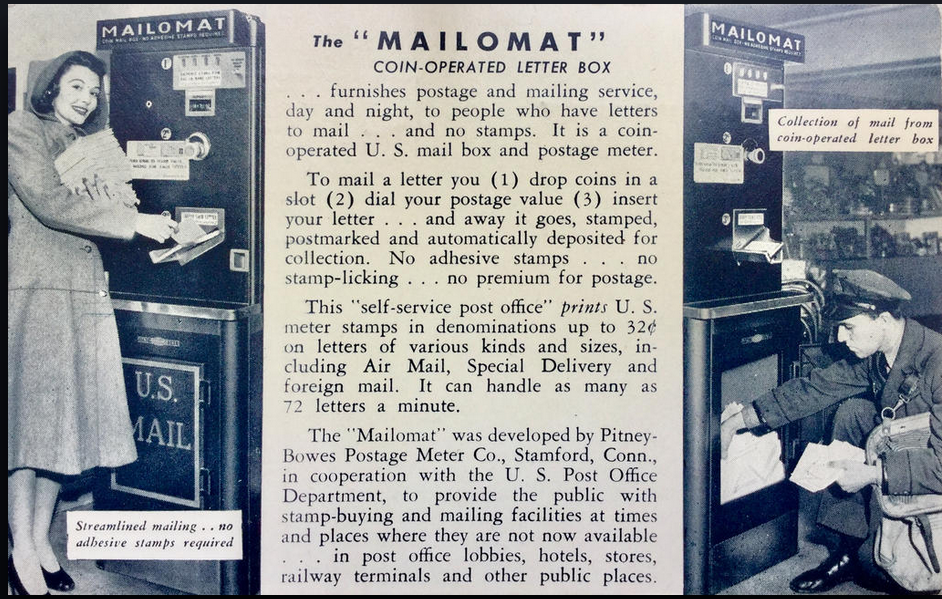
Posted By: Paul - Fri Dec 24, 2021 -
Comments (1)
Category: Inventions, Technology, 1930s, 1940s, Postal Services
Non-Conformist in Classroom
Dec 1939: To disprove the contention of philosophy professor Albert Shepard that "everyone is a conformist," NYU student Rhoda Shafter showed up to his class in a bathing suit.I like the bewildered look on the face of Prof. Shepard, lurking in the background of the photo below.
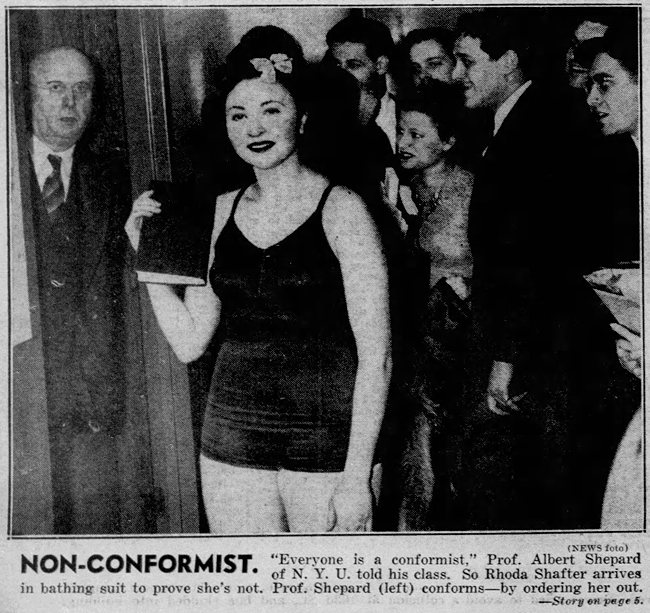
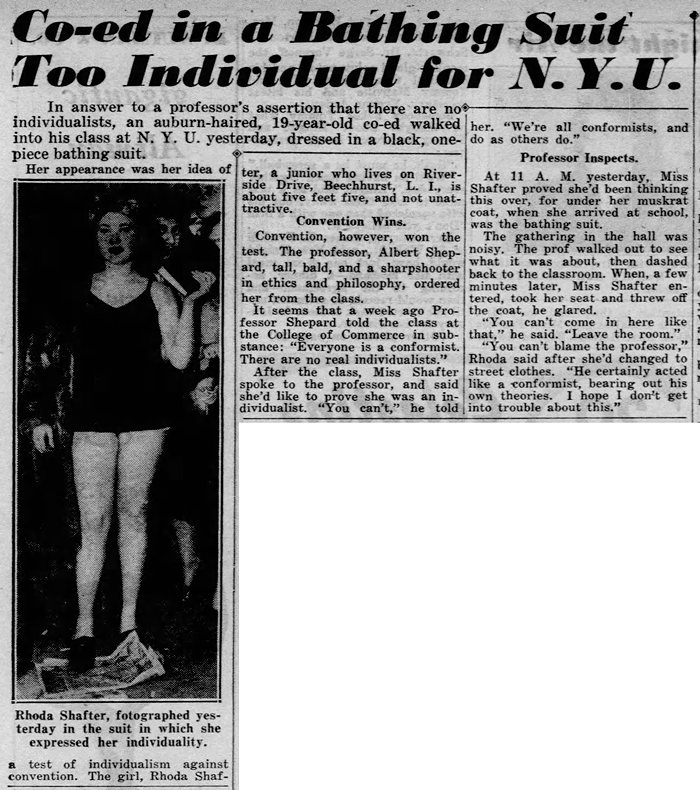
New York Daily News - Dec 21, 1939
Rhoda died in 2012. Read her obituary here.
Posted By: Alex - Sat Dec 18, 2021 -
Comments (2)
Category: 1930s, Universities, Colleges, Private Schools and Academia
The Beachette
Esther Brown was granted a patent (No. 2,266,684) in 1938 for the "beachette," which was a wearable beach umbrella. A beachgoer could wear the fabric of the umbrella as a skirt/cape/hat combo. The pole doubled as a cane. When they got to the beach it could all be assembled into an umbrella.The problems I see: a) you've still got to carry the pole; and b) I bet assembling/disassembling the thing was a nuisance.
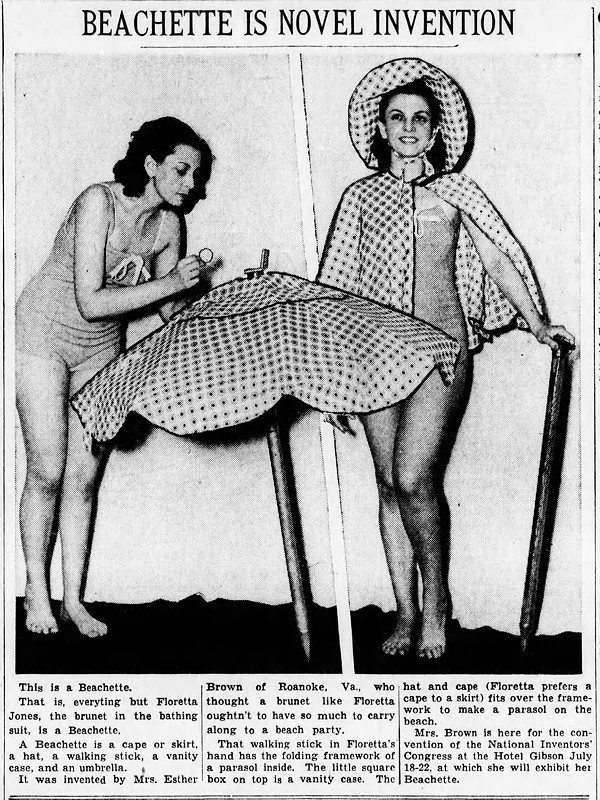
Cincinnati Enquirer - Jul 8, 1938
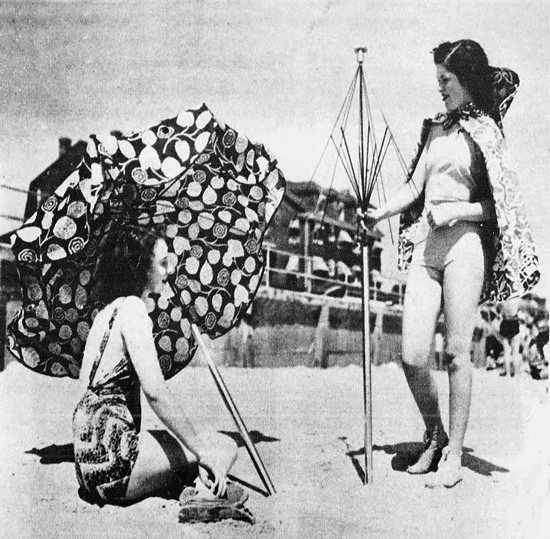
Pittsburgh Press - Sep 25, 1938
Posted By: Alex - Mon Dec 13, 2021 -
Comments (1)
Category: Fashion, Inventions, Patents, 1930s
Unique Bus of the Future
Lots of swimming pool sloshing when you hit a speedbump.Source.
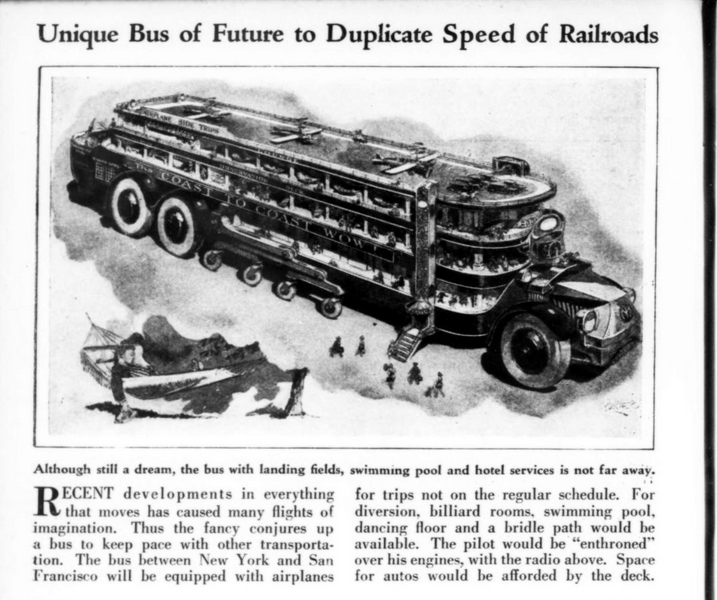
Posted By: Paul - Mon Dec 13, 2021 -
Comments (4)
Category: Excess, Overkill, Hyperbole and Too Much Is Not Enough, Motor Vehicles, 1930s
Rain Goggles For The Motorist
I'm surprised someone isn't selling a battery-operated version of these today as a gag gift. Wouldn't even need to be for motorists. Perfect for anyone out for a stroll in the rain.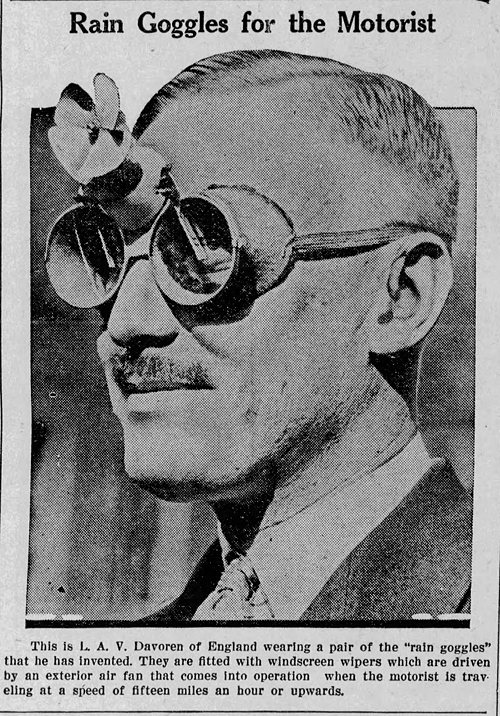
The Oklahoma Freedom Call - Feb 8, 1934
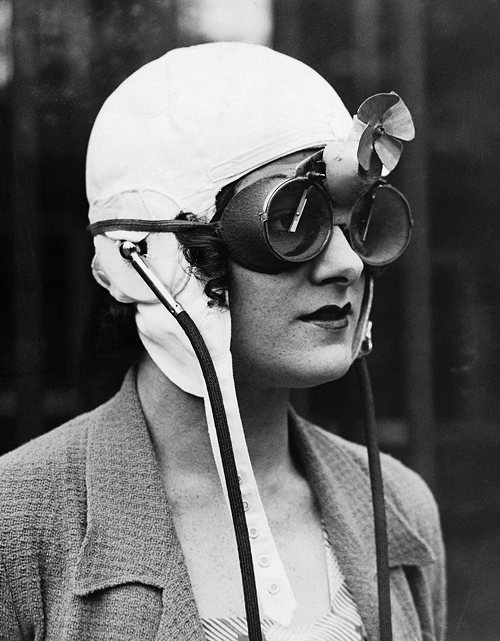
"Miss Paddie Naismith, noted English racing chauffeur, is shown wearing the very latest in motor modes, rain goggles, with wipers 'n' everything. A small fan, you can see it over the bridge of the nose, operates the wipers when the car is travelling at speeds in excess of 15 M.P.H. Its inventor is L.A.V. Davoren of London." — International News Photo, Oct 1933
image source: reddit
Posted By: Alex - Tue Dec 07, 2021 -
Comments (3)
Category: Inventions, 1930s, Weather, Eyes and Vision, Cars

| Who We Are |
|---|
| Alex Boese Alex is the creator and curator of the Museum of Hoaxes. He's also the author of various weird, non-fiction, science-themed books such as Elephants on Acid and Psychedelic Apes. Paul Di Filippo Paul has been paid to put weird ideas into fictional form for over thirty years, in his career as a noted science fiction writer. He has recently begun blogging on many curious topics with three fellow writers at The Inferior 4+1. Contact Us |




